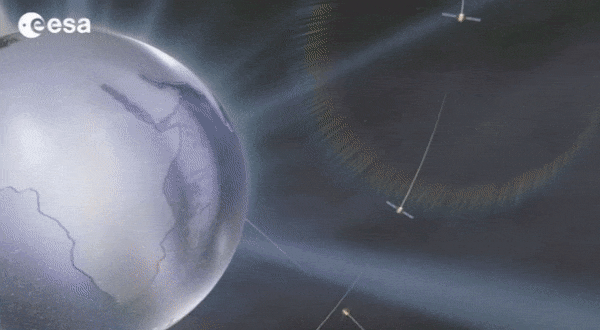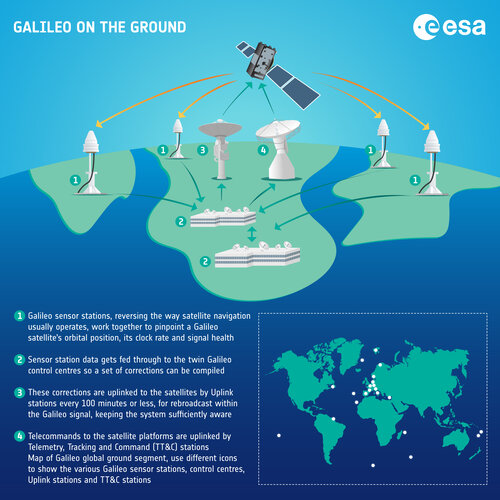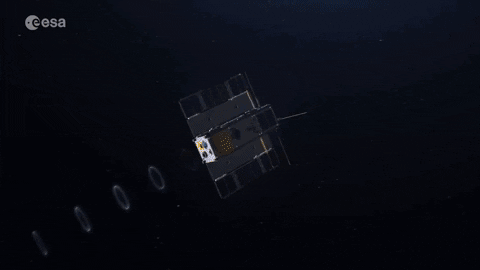Canadian military orders space surveillance micro satellite
Friday, 10 March 2023 22:24
Canada’s Department of National Defence is moving ahead with a new microsatellite project for space domain awareness.
Intelsat and Eutelsat forge multi-orbit capacity deal
Friday, 10 March 2023 22:05
Eutelsat said March 9 it has signed a multi-million euro deal to provide more satellite capacity to Intelsat, including from OneWeb’s low Earth orbit network the French operator is acquiring.
Space sector reacts to collapse of Silicon Valley Bank
Friday, 10 March 2023 21:37
Space companies and investors are reacting to the collapse of Silicon Valley Bank, a financial institution many relied on for investment, loans and traditional banking services.
Space Force allocates three historic Cape Canaveral launch pads to four companies
Friday, 10 March 2023 21:09
The U.S. Space Force is allocating three launch complexes at Cape Canaveral, including one used for several NASA Mercury missions six decades ago, to four small launch vehicle startups as the service tries to keep up with growing launch demand.
RS21 earns patent for AI-based monitoring
Friday, 10 March 2023 13:00
RS21's artificial intelligence-based software called Space Prognostic AI Custodian Ecosystem, or SPAICE, is aimed at improving satellite monitoring.
The post RS21 earns patent for AI-based monitoring appeared first on SpaceNews.
Galileo: no way without time
Friday, 10 March 2023 12:55
Europe’s Galileo is the world’s most precise satellite navigation system, providing metre-level accuracy and very precise timing to its four billion users. An essential ingredient to ensure this stays the case are the atomic clocks aboard each satellite, delivering pinpoint timekeeping that is maintained to a few billionths of a second. These clocks are called atomic because their ‘ticks’ come from ultra-rapid, ultra-stable oscillation of atoms between different energy states. Sustaining this performance demands, in turn, even more accurate clocks down on the ground to keep the satellites synchronised and ensure stability of time and positioning for
Inspiring mocktail menu served up by Space Juice winners
Friday, 10 March 2023 12:00
An impressive 70 mocktail recipes representing a wide range of flavours of ESA’s Jupiter Icy Moons Explorer (Juice) mission were submitted to the Agency’s #SpaceJuice competition in January.
Galileo on the ground – infographic
Friday, 10 March 2023 11:56 Image:
Galileo on the ground – infographic
Image:
Galileo on the ground – infographic Momentus preparing for Vigoride thruster test as it ships next vehicle
Friday, 10 March 2023 10:39
In-space transportation company Momentus is gearing up for a key test of one orbital transfer vehicle as it ships another for launch next month.
China is developing a quantum communications satellite network
Friday, 10 March 2023 09:11
Chinese research institutes are working to construct a quantum communications network using satellites in low and medium-to-high Earth orbits.
Earth from Space: Graham Coast, Antarctica
Friday, 10 March 2023 08:00 Image:
The icy landscape of Graham Coast, which lies on the west side of the Antarctic Peninsula, is featured in this Copernicus Sentinel-2 image.
Image:
The icy landscape of Graham Coast, which lies on the west side of the Antarctic Peninsula, is featured in this Copernicus Sentinel-2 image. Seed funding sends European software into orbit
Friday, 10 March 2023 07:00
“You can read everything there is to know about driving a car, but you won’t really understand what it’s like to drive one until you get behind the wheel. That’s what it’s like to fly your software in orbit,” says David Evans, ESA’s OPS-SAT Space Lab manager.
Over the last year, 12 project teams have had the chance to experience this first hand thanks to a combination of seed funding from the Discovery element of ESA's Basic Activities and access to ESA’s experimental OPS-SAT CubeSat.
Hughes unveils Jupiter 3
Friday, 10 March 2023 04:27
Hughes Network System unveiled Jupiter 3, a massive geostationary communications satellite built by Maxar Technologies.
The post Hughes unveils Jupiter 3 appeared first on SpaceNews.
Atlas joins forces with Viasat RTE
Friday, 10 March 2023 01:05
Through a partnership with Viasat Real-Time Earth, Atlas Space Operations will expand its antenna network and offer customers access to larger antennas.


 Image:
YPSat’s trial by vacuum
Image:
YPSat’s trial by vacuum